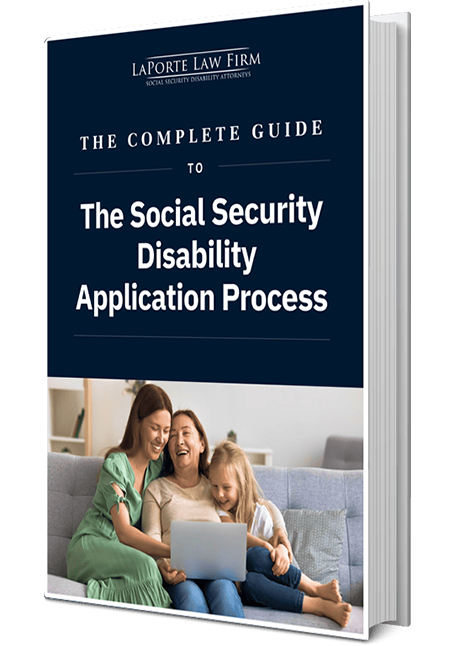
As you approach your 67th birthday, you might wonder, “What will happen to my Social Security disability benefits when I reach this milestone?” It’s a question that many recipients of Social Security disability benefits ponder as they near the traditional retirement age. Understanding what to expect when you reach full retirement age can help you plan for the next phase of your life with confidence.
In this article, we will delve into the specifics of how your benefits might be affected as you transition from Social Security disability benefits to Social Security retirement benefits.
Overview of SSI and SSDI
Social Security disability benefits offer a crucial safety net for those who are unable to work because of physical or mental impairments. Administered by the Social Security Administration (SSA), these benefits provide monthly payments to help disabled individuals cover essential living expenses, access necessary medical care and support services, and maintain a degree of financial independence. Social Security disability includes two types of benefits: Supplemental Security Income (SSI) and Social Security Disability Insurance (SSDI).
To be eligible for both SSI and SSDI, you must have a permanent mental or physical impairment that prevents you from performing your past work or other work in the national economy. While the ultimate goal of both SSI and SSDI is to provide financial support to people with disabilities, there are significant differences in the eligibility requirements for each program.
SSI is a needs-based program designed to assist individuals with disabilities who have limited income and resources. This program is available to both adults and children with disabilities. One of the main requirements for SSI is that the individual must have limited assets and income. Specifically, SSI recipients must have resources under $2,000 for individuals or $3,000 for couples, excluding certain assets such their primary home and car.
On the other hand, SSDI provides benefits to individuals who have worked in jobs that are covered by Social Security and paid into the system through payroll taxes over time. The amount of SSDI benefits a person is eligible for is based on their work history and the amount of Social Security taxes they have paid. Unlike SSI, which focuses on financial need, the monthly SSDI benefit depends on an individual’s work history. To qualify, applicants must have earned enough work credits, which are accumulated by working and paying Social Security taxes. Most adults need to have worked for at least 5 out of the last 10 years to qualify for SSDI.
Full Retirement Age and Its Impact on Social Security Disability Benefits
Full retirement age (FRA) is the age at which you can begin receiving full Social Security retirement benefits without any reduction in the monthly amount. The FRA depends on the year you were born. For those who claim benefits before reaching their FRA, the monthly benefit is reduced, and for those who delay claiming beyond FRA, the benefits increase up to age 70.
The FRA has gradually increased over time due to changes in life expectancy. For those born after 1960, the FRA is 67, meaning they must wait until 67 to receive their full retirement benefits.
Claiming retirement benefits at age 62 vs. at age 70
You can start claiming Social Security retirement benefits as early as age 62, but if you do, your monthly payment will be reduced. The reduction is about 30% less than your full benefit amount if you claim at age 62 compared to waiting until FRA.
On the other hand, if you choose to delay claiming your benefits beyond your FRA, up to age 70, your monthly benefit will increase. For every year you wait after your FRA, your benefit grows by about 8% annually. This means that if you wait until age 70, you could receive 32% more in benefits than if you started at your FRA.
You may refer to this official chart from SSA for more information:
Transition from SSDI to Retirement Benefits
Disability beneficiaries who reach their FRA are no longer eligible for SSDI benefits. Therefore, if you are a current disability beneficiary, when you reach your full retirement age, your SSDI benefits automatically transition to retirement benefits. You do not need to reapply or do anything to make this change. The benefits continue without interruption. The only change that will occur is that the SSA will label your monthly benefit as a retirement benefit instead of a disability benefit.
Impact on benefit amount
Once your SSDI benefits convert to retirement benefits, the amount you receive stays the same. This is because the Social Security Administration calculates both SSDI and retirement benefits in the same way — that is, based on your earnings history and the number of work credits you’ve accumulated. So, when you reach FRA, your disability benefits just become retirement benefits, but the monthly payment stays the same. The only difference is that it’s now classified as a retirement benefit, not a disability benefit.
Early Retirement and SSDI
For those on SSDI, early retirement isn’t always straightforward, and it’s natural to wonder how it could impact your finances in the long term. Here are some things you should know to help you make informed decisions about your future and understand the potential implications of transitioning from SSDI to early retirement benefits.
Rules for applying early (age 62)
It’s possible to apply for both early retirement and disability benefits at the same time. This is sometimes a necessary option for those who need financial support while their disability claim is pending. In addition, if you are already on early retirement benefits, you can still file a claim for disability benefits. This allows you to receive some income while you wait for your disability benefits to be approved.
It should be noted that if you apply for early retirement benefits and also file for disability benefits, but your disability claim is denied, you could be locked into the early retirement amount. This means that if your disability application is unsuccessful, you’ll continue receiving the reduced early retirement benefits, which are lower than the full retirement amount.
Since the early retirement benefits start as early as age 62 and are permanently reduced, losing the disability claim would mean you cannot switch back to a higher benefit once you’re locked into early retirement. It’s important to carefully consider this risk before applying for early retirement alongside a disability claim, especially if you’re relying on the higher disability benefits in the long term.
Switching from early retirement to SSDI
If your disability claim is eventually approved, your early retirement benefits will convert to disability benefits, and you’ll receive the higher SSDI amount. This option gives you financial relief during the waiting period, but keep in mind that the early retirement benefits are reduced, and it’s a decision you must carefully consider based on your financial needs.
Benefit calculation implications
When you file for early retirement benefits before reaching your FRA, your monthly payment will be reduced. The earlier you start, the smaller your benefit will be. If you begin receiving retirement benefits at age 62, for example, you could receive as much as 25–30% less than what you would get if you waited until your FRA to start receiving benefits.
On the other hand, your SSDI benefits are calculated based on what you would receive at your FRA, even if you start collecting benefits earlier due to disability. This means that if you qualify for SSDI, your monthly benefit amount will be the same as the amount you would receive at your FRA, which is typically higher than what you’d receive from early retirement benefits.
Medicare Changes
Medicare is health insurance from the government that helps cover doctor visits, hospital stays, and other medical needs. It helps make healthcare more affordable as you get older. You become eligible for Medicare when you turn 65. This is the age when most people can sign up for this government health insurance program. However, if you become eligible for SSDI before you turn 65, you may become entitled to Medicare earlier. After receiving SSDI benefits for 24 months, you automatically become eligible for Medicare, even if you’re much younger than 65. This is a valuable benefit because without SSDI, you’d usually have to wait until age 65 to get Medicare coverage.
When you transition from SSDI benefits to retirement benefits, your Medicare coverage will stay the same, and you don’t need to do anything to keep it going. The switch happens automatically, and your health insurance through Medicare continues without any gaps or extra steps.
If you transition from SSDI benefits to retirement benefits, you will continue to have the same benefits under Medicare Part A (hospital insurance) and Part B (medical insurance). Your prescription drug coverage through a Part D plan will also remain the same. The only change you might notice is with a Medicare Part C Supplement plan. When you turn 65, your premium for your supplement plan may go down, as insurance companies often offer lower rates to people who qualify for Medicare based on age rather than disability.
Navigating Changes with Professional Guidance
Figuring out how Social Security retirement and disability benefits work and impact each other can be overwhelming, as both programs come with intricate rules, eligibility requirements, and long-term financial implications. Deciding when to file for early retirement benefits, for instance, can significantly impact the amount you receive over time, making it crucial to consult a financial planner who can help you understand how your choices align with your overall retirement goals.
Similarly, if you’re considering applying for Social Security disability benefits, reaching out to a qualified disability attorney can make a big difference. They can help clarify the application process, ensure your paperwork is in order, and answer any questions you have about eligibility or appeals. With so much at stake, expert guidance is not just helpful—it’s essential.
Reach out to the Social Security disability attorneys at LaPorte Law Firm today for personalized guidance and answers to your questions about SSDI and early retirement.
FAQs
If you’re receiving Social Security Disability Insurance benefits, these benefits automatically convert to Social Security retirement benefits once you reach your full retirement age. You don’t need to apply separately — this transition happens seamlessly and doesn’t affect the amount you receive. Full retirement age varies depending on the year you were born. For example, if you were born between 1943 and 1954, your FRA is 66. If you were born in 1960 or later, your full retirement age is 67.
In most cases, the amount you receive from Social Security will not change when your benefits automatically transition from SSDI benefits to retirement benefits at your full retirement age. The only exceptions that might affect your payment could involve other factors, such as changes in Medicare premiums or taxation of benefits. However, the base benefit amount itself does not decrease or increase solely because of the transition.
SSDI benefits and Social Security retirement benefits are taxed under the same rules by the IRS, meaning they are subject to the same tax treatment. The amount of your benefits that is taxed depends on your total income, including other sources of income such as wages, pensions, or interest. If your combined income exceeds certain thresholds, up to 85% of your Social Security benefits — whether from SSDI or retirement — may be taxable. For single filers, this threshold starts at $25,000 in combined income, and for married couples, it begins at $32,000. Therefore, the tax rules are the same for both SSDI and retirement benefits, and what matters is your overall income, not the type of Social Security benefit you’re receiving.
















